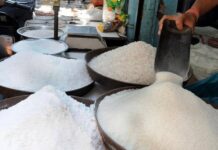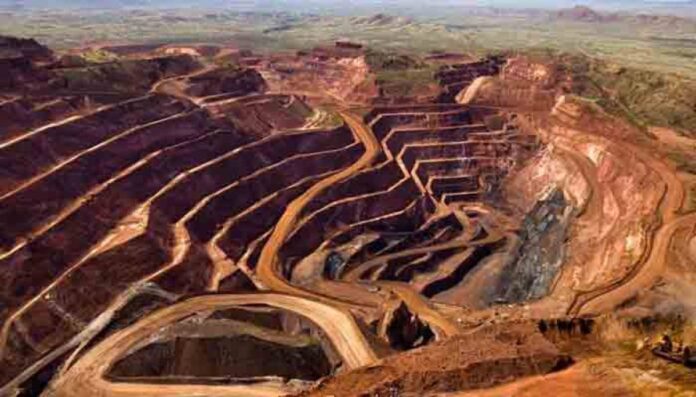Barrick Gold Corporation, having won a favourable ruling from Pakistan’s Supreme Court and the necessary laws having been enacted, has declared that it has finished reconstituting the Reko Diq project.
The conclusion of the legal procedures, according to Barrick President and Chief Executive Mark Bristow, was a critical step in developing Reko Diq into a world-class, long-life mine that would significantly increase the company’s “strategically significant copper portfolio and benefit its Pakistani stakeholders for generations to come”.
In a press release from the company Bistrow further stated that, “we are currently updating the project’s 2010 feasibility and 2011 feasibility expansion studies. This should be completed by 2024, with 2028 targeted for first production.”
“With its unique combination of large scale, low strip and good grade, Reko Diq is expected to have a life of at least 40 years. We envisage a truck-and-shovel open pit operation with processing facilities producing a high-quality copper-gold concentrate. We expect it to be constructed in two phases with a combined process capacity of 80 million tonnes per annum.”
Apart from the economic benefits it would provide, the mine will also create employment, support the expansion of a regional economy, and invest in development initiatives in the undeveloped Balochistan province.
Full funding of the province’s stake in the mine will allow Balochistan to profit from its 25% ownership’s dividends, royalties, and other benefits without having to contribute financially to its development or operation.
Barrick stated in its press release that, “we’re making sure that Balochistan and its people will see these benefits quickly. Starting early next year, Barrick will implement a range of social development programs prioritising the improvement of healthcare, education, vocational training, food security and the provision of potable water. Our investment in these is expected to amount to around $70 million over the feasibility and construction period. In addition, Reko Diq will advance royalties to the government of Balochistan of up to $50 million until commercial production starts.”
The numbers speak for themselves
Using the figures provided by Arif Habib Limited report “Revival of Reko Diq Project”, the scope and earnings this project would generate are massive to say the least and rightfully subtitled “The Home Run”.
The project is divided into two phases, with a total projected capex cost of $7 billion, with the first phase requiring $4 billion and the second phase requiring $3 billion. In addition, the project’s total entry amount is $2.2 billion, bringing the entire project size to $9-10 billion.
Annual copper output is predicted to be between 650 and 700 million pounds per annum for the first ten years, increasing to 800 to 850 million pounds per annum when phase 2 is completed. Furthermore, gold production is estimated to be 300,000 to 350,000 ounces on yearly basis for the first ten years (first phase) before increasing to 450,000 to 500,000 oz. following the planned expansion.
To estimate the overall value of the project we’ll assume constant pricing for both gold and copper, taking the average price of the commodities over the period of the last ten years.
If we were to only look at the first phase of the project, keeping in mind the numbers above, it would generate an estimated $ 14 billion for the government in only the first 10 years of its operation.
The significant portion of the revenue would be dominated by the sale of Copper and would account for 83.25% or $11.67 billion of the revenue in the first phase, whereas Gold would account for the remaining 16.75% or $2.35 billion.
Likewise with the expansion envisioned for the second phase the output of the mine would increase, and with it the revenues generated would also rise. An accumulative revenue amount of $62 billion is expected to be generated over the course of the second phase that has a stipulated time period of 35 years.
In terms of the revenue mix, Copper again would account for the bulk of the revenue in this case 80.6% or $49.9 billion. Whereas the mining of Gold would amount to 19.4% or $12 billion of the total revenue expected to be generated in the second phase.
To sum it all up the Government of Pakistan would be able to generate an average of $1.4 billion annually over the course of the first phase and an additional $1.7 billion over the next 35 years during the second phase of the project. This would amount to a whopping $76 billion over the next 45-50 years.
Although these estimates and calculations provide a simplistic understanding of the monetary returns expected to be generated by Reko Diq, these are still estimates nonetheless. The considerations taken to keep the number crunching consistent do not account for the variable price of copper and gold in the international market as well as other direct and indirect factors.
Concerns
A key concern that still requires attention is the logistical aspect of this mega project, considering the remoteness of the project site, and consequently the logistics required to make this a feasible project have to be further developed.
Taking the example of the Saindak silver mine located in Chaghai, the silver ore extracted from the mine has to be transported 1,127 km from the site to the port in Karachi by trucks. That is absolutely ridiculous, as the costs associated with using trucks would have an adverse effect on the bottom line and overall feasibility of the project.
If a similar plan is on the table for Reko Diq, the margins of Barrick and the Government would significantly diminish.
Water was highlighted as the project’s “most critical” issue in the Risk Assessment Report pertaining to Reko Diq published by Behre Dolbear in October 2007, and Pakistan underlined it during the ICSID hearings whilst examining the feasibility of ensuring water supply.
Water is most commonly used in mining to process ore and to water mine roads to reduce dust. Aquifers, surface water, collected precipitation, and even water from the mine itself, provided the mine is actively dewatered, are all possible sources of water for mining.
Naturally due to the remoteness of the site location, developing infrastructure and building a sustainable water source for the next 45 years for the mining operations is a monumental challenge.
Historically as Pakistanis all of us have been witness to unsuppressed corruption, inefficiencies as well as plain and simple stupidity on part of the decision makers and various government entities. The country has a chequered past of poorly executed projects and pitiful government oversight next to little or no support to investors. To compound all this, bureaucrats and politicians in positions of power never fail to get their kickbacks from projects like these.

























Pakistanis are probably the dumbest people in the world.